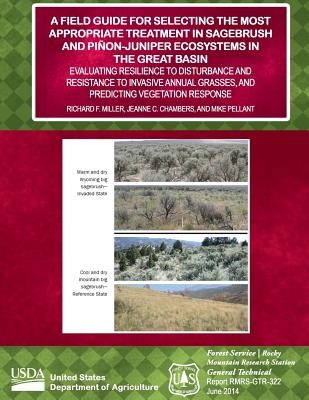
- We will send in 10–14 business days.
- Author: United States Department of Agriculture
- Publisher: CreateSpace Independent Publishing Platform
- ISBN-10: 1511856793
- ISBN-13: 9781511856799
- Format: 21.6 x 28 x 0.4 cm, softcover
- Language: English
- SAVE -10% with code: EXTRA
A Field Guide for Selecting the Most Appropriate Treatment in Sagebrush and Pinon-Jupiter Ecosystems in the Great Basin (e-book) (used book) | bookbook.eu
Reviews
Description
This field guide identifies seven primary components that largely determine resilience to disturbance, as well as resistance to invasive grasses and plant succession following treatment of areas of concern. The primary components are (1) characteristics of the ecological site, (2) current vegetation prior to treatment, (3) disturbance history, (4) type, timing, and severity of the treatment, (5) post-treatment weather, (6) post-treatment management, especially grazing, and (7) monitoring and adaptive management. A series of key questions and a set of tools are provided to assess these primary components. This assessment is designed to allow field personnel to (1) evaluate resilience to disturbance and resistance to invasive annual grass for an area of concern, (2) predict the potential successional pathways, and (3) then select the most appropriate treatment, including the need for seeding. An evaluation score sheet is included for rating resilience to disturbance and resistance to invasive annual grasses and the probability of seeding success.
EXTRA 10 % discount with code: EXTRA
The promotion ends in 18d.23:25:23
The discount code is valid when purchasing from 10 €. Discounts do not stack.
- Author: United States Department of Agriculture
- Publisher: CreateSpace Independent Publishing Platform
- ISBN-10: 1511856793
- ISBN-13: 9781511856799
- Format: 21.6 x 28 x 0.4 cm, softcover
- Language: English English
This field guide identifies seven primary components that largely determine resilience to disturbance, as well as resistance to invasive grasses and plant succession following treatment of areas of concern. The primary components are (1) characteristics of the ecological site, (2) current vegetation prior to treatment, (3) disturbance history, (4) type, timing, and severity of the treatment, (5) post-treatment weather, (6) post-treatment management, especially grazing, and (7) monitoring and adaptive management. A series of key questions and a set of tools are provided to assess these primary components. This assessment is designed to allow field personnel to (1) evaluate resilience to disturbance and resistance to invasive annual grass for an area of concern, (2) predict the potential successional pathways, and (3) then select the most appropriate treatment, including the need for seeding. An evaluation score sheet is included for rating resilience to disturbance and resistance to invasive annual grasses and the probability of seeding success.


Reviews